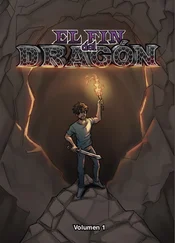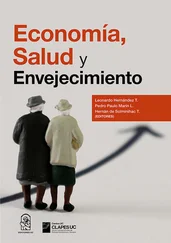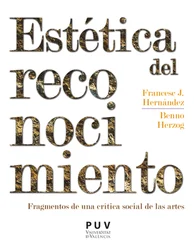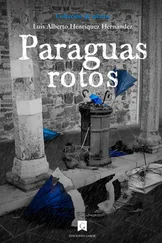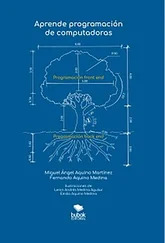According to my notebook, the Mexican artist stated that following death, human beings go on existing in a different form. Material cannot be destroyed, but it can be scattered, like pollen. It can dissipate, like a fog that slowly clears instead of simply disappearing, dividing itself into multiple particles that end up in the most unsuspected places, some that are invisible to our eyes, because they travel through the other side of the looking-glass and no one has shown us how to see them.
This is why in his work he seeks the elemental forms: circles, squares, lines. The meaning of everything, from across all of time, can be found in these forms: that which links us to our most truthful essence, that which reminds us we are merely material that has been melted down then fused with more material, which can manifest itself in infinite forms.
Finally, we brought the interview to a close. I was far from satisfied with the results. I could no longer see the shapes of the paragraphs of my article in my head. I could no longer imagine the lines of my text having the same harmony and flourish as the lines with which Vicente Rojo had reproduced the rain over Mexico in his paintings. So, I knew that without a doubt I’d got myself into a real mess. Again.
The artist must have sensed my despair, and, maybe to console me, he insisted that I accept his painting as a gift. He also gave me the books and catalogues about his oeuvre that he had mentioned earlier. They’d all be very useful for my writing, but the situation seemed a little over the top, because of his generosity, the size of the painting, and my discomfort. I knew he was getting rid of something valuable, of objects that were almost like talismans for him, like the pencil he’d held on to throughout the whole interview.
My discomfort only grew on the journey home. I could even say that I finally understood the rejection Berta was compelled to when faced by that man and his generosity. I remember moving the painting from his studio to my house as something so out of proportion it was almost grotesque. In his hurry for me to take the painting and leave his studio, I hadn’t even had time to look at it, and I felt something like shame when we passed people staring at us in the street. I thought that it was no way to transport a painting by Vicente Rojo, and that there was something worrying about how anxious he was to get rid of his own artwork.
Because of the way our last interview had gone, I had no doubt that he would never invite me to his studio again. I’d given up on the possibility of another interview altogether. I already had several hours of conversation recorded, and I could lean on everything that had been written about him by others.
Carrying the painting home was such an onerous task, with so many difficulties along the way, that the easiest thing would have been to give up. But we didn’t. In silence, except for the bare minimum to coordinate our movements, the artist and I did our best to work our way around all the different angles in the three flights of stairs we had to climb. We were both irritated. Between the first and second floors a bit of wood snapped off the frame, which made the absurdity of the situation even more intense. But even that wasn’t enough to stop us. We kept at it until a painting about two metres tall by three metres wide with the entire right side of the frame ruined made it through the door of my apartment. As soon as I was inside with the painting, Vicente Rojo very discreetly said goodbye and set off. I left his artwork resting against the wall in the hallway.
Berta arrived home a few hours later. I had been so bewildered by the way the last interview had gone and the process of transporting the painting that I hadn’t even thought of my daughter’s possible reaction when she saw it in our home.
She came into the study where I was taking refuge, perhaps to remind myself that all these crazy happenings served a purpose: I intended to write an article and an essay about a Mexican artist whose work and ethics were a kind of beacon. I was trying to organise all the notes I had taken. Berta watched me and waited a few seconds before speaking. She was in a bad mood.
‘I can’t have a pet, but you’ve bought yourself a huge, horrible painting.’
‘I didn’t buy it. It’s a painting by Vicente Rojo, although you’d never understand what that means. And anyway, there’s no reason why you can’t have a pet.’
‘Oh really? I can have one now?’
‘Berta, I never said you couldn’t have a pet. You’ve just become obsessed with an impossible option because the ibis, in addition to being practically extinct, is a bird that cannot live inside an apartment. Do you want to argue about this again?’
She was having trouble breathing, and her eyes were wet and shiny. Any other mother would have understood that she should get to the bottom of what was making her daughter upset, but I was afraid and I lived under the constant threat that a tragedy might take place. And I was feeling unsettled myself.
‘Why did you bring that painting home?’
In the beginning, it seemed like she was going to continue talking, but instead she burst into tears and shut herself in her bedroom. Berta is a nervous crier. Ever since she was small, whenever she couldn’t contain her own sense of discomfort, ridiculousness, or rage, she has erupted into nervous weeping that tightens her throat and prevents her from talking. It had often frightened me, because she would then break out into a raspy coughing fit that was so loud and hoarse it was hard to believe it came from such a tiny, fragile body. It’s hair-raising to hear her cry like that. Pablo always blamed me for bringing on these fits. Sometimes they were so loud that they shook the walls, and that’s no exaggeration. As she grew up, the coughing grew even stronger. When she cries like that, I’m always afraid that something inside her will break. That night she cried for quite some time. It was obvious that I should have gone into her room to try to calm her down, but I reacted too late. When at last I went in, she didn’t reject my embrace, despite what I was expecting, but instead let me hold her in my arms. That’s how I experienced it: a slight relaxation in her muscles in which she let go of the strength and effort required to keep her body upright. She had given in and abandoned herself. She had capitulated in the face of something much greater than her, something I had no idea about. When at last she had calmed down, we were able to talk.
When Berta was four or five years old and had one of these attacks, I would become alarmed to the point where reality disappeared and the only thing that truly mattered was making sure my daughter was breathing, that she wasn’t coughing up blood, that she was OK. A sick child is a painful contradiction in terms. Something like a paradox that reminds us not only of the fragility of existence, but that everything is the fruit of chance, that destiny is arbitrary, because the normal, logical thing would be for a child to grow up, go to school, enter society, and relieve the preceding generation from their posts, even if we never understand the purpose or meaning of this whole chain of people replacing one another. But this is the logic of the world we live in, and the basis from which we build everything else. And this logic had been overthrown for my daughter. That night, when she managed to stop crying and her breathing became normal again, she told me that for several months she had been playing the prosopagnosia game — which I already knew about — the game where she stared into the mirror while holding her breath for so long that either she could no longer recognise her own face or she had beaten the other players. She always played with Mario and Lucas, and she almost always won, because Lucas got bored quickly (in fact, he didn’t even like the game) and Mario fainted more easily than she did. I remembered that I still had to take her to the doctor to discuss these fainting spells and for her to have a general examination. Berta kept on talking, as if she needed to explain something that she herself couldn’t understand. She needed to reconstruct her story to find any small details she had passed over. During one of these fainting spells, Mario had hit his head against the sink in the boys’ bathroom and bled profusely from his jaw. This is why the teacher had called in the parents of all three children. Mario’s mother had been very frightened because Mario needed six stitches, and he was taken to the doctor to discuss his fainting. I felt guilty for not having done that yet. The doctors said that Mario had a terrible illness, one of those ones that tend to be suffered by old people rather than children. When a fifteen-year-old boy receives a diagnosis like that, it becomes a tragic contradiction in terms.
Читать дальше

